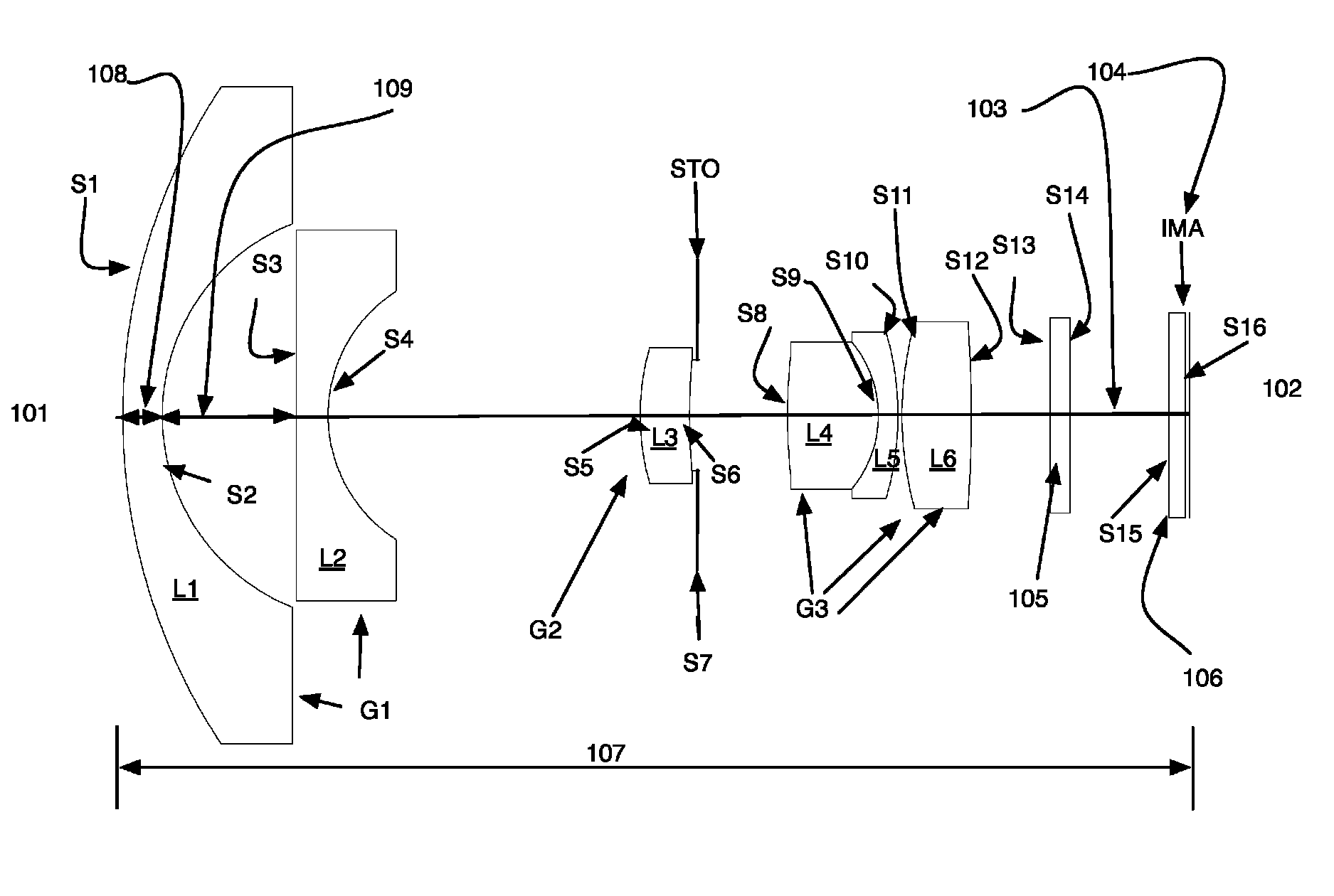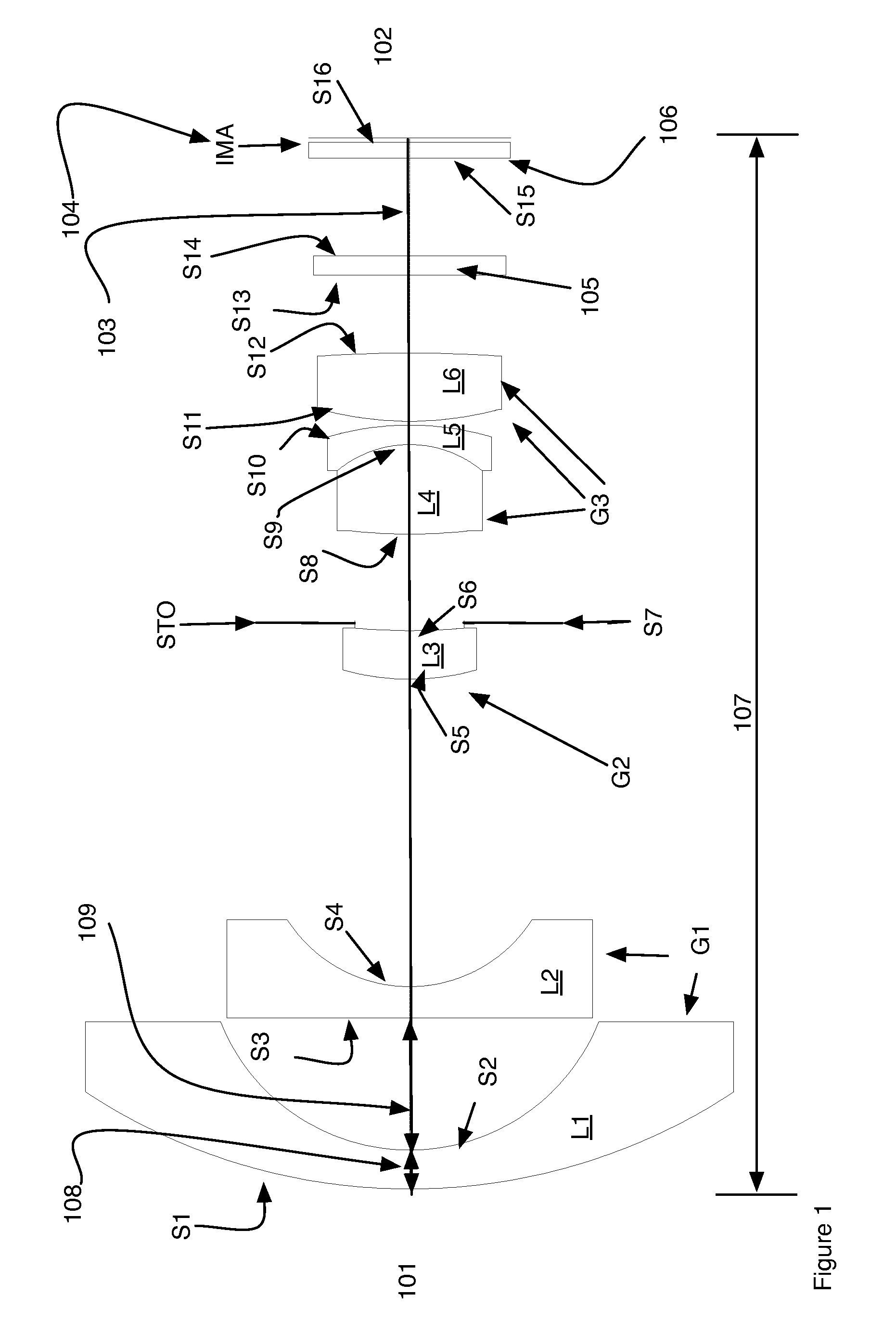Wide-angle lenses with reduced ghost reflections
a wide-angle lens and ghost reflection technology, applied in the field of lenses, can solve the problems of secondary images appearing in the angle lens and more prone to ghost reflection in the wide-angle lens, and achieve the effect of reducing the intensity of secondary or ghost images
- Summary
- Abstract
- Description
- Claims
- Application Information
AI Technical Summary
Benefits of technology
Problems solved by technology
Method used
Image
Examples
examples 1-5
[0035]Examples 1 through 5 represents designs that all meet all of the conditional expressions (1) through (5) listed above.
example 1
[0036]Still referring to FIG. 1 the optical layout of the first example is shown. Counting from the left side, which is also the object side 101 and proceeding to the image end 102, the wide-angle lens is comprised of lens elements L1-L6 arranged in three groups G1, G2, G3. The optical axes of the lens elements L1-L6 are aligned along the optical axis 103 of the wide-angle lens. In addition to the lens elements there is also an optical filter 105, a cover plate 106 for the image sensor 104 also labeled IMA. The image sensor 104 is located at the focal plane of the wide-angle lens. The total track length of the lens 107 is also shown. The first element L1 is a meniscus lens with negative power. The first element has a convex object surface S1 and a concave object surface S2. The second element L2 has negative power and a concave image surface S4. In preferred embodiments, this element L2 is a plano-concave element having a flat object surface S3. The third element L3 is a member of t...
example 2
[0044]Referring to FIG. 2 a second exemplary embodiment is shown. Counting from the left side 201, which is also the object side, the first element L1 is a meniscus lens with negative power. The first element has a convex object surface S1 and a concave image surface S2. The second element L2 has negative power having a concave image surface S4. In preferred embodiments, this element is a plano-concave element having a flat object surface S3. The third element L3 has a positive power having a meniscus, plano-convex or double convex shape. In the example in FIG. 2, the third element L3 is plano-convex. The object surface is convex and the image surface S6 is planar. The aperture stop STO follows the 3rd element L3. The fourth element L4 and fifth element L5 form a cemented doublet where the power of the fourth element is positive and fifth negative. The image surface S10 of the fifth element is flat or convex. In the Figure shown it is convex. The object side S8 of the fourth element...
PUM
 Login to View More
Login to View More Abstract
Description
Claims
Application Information
 Login to View More
Login to View More - R&D
- Intellectual Property
- Life Sciences
- Materials
- Tech Scout
- Unparalleled Data Quality
- Higher Quality Content
- 60% Fewer Hallucinations
Browse by: Latest US Patents, China's latest patents, Technical Efficacy Thesaurus, Application Domain, Technology Topic, Popular Technical Reports.
© 2025 PatSnap. All rights reserved.Legal|Privacy policy|Modern Slavery Act Transparency Statement|Sitemap|About US| Contact US: help@patsnap.com



